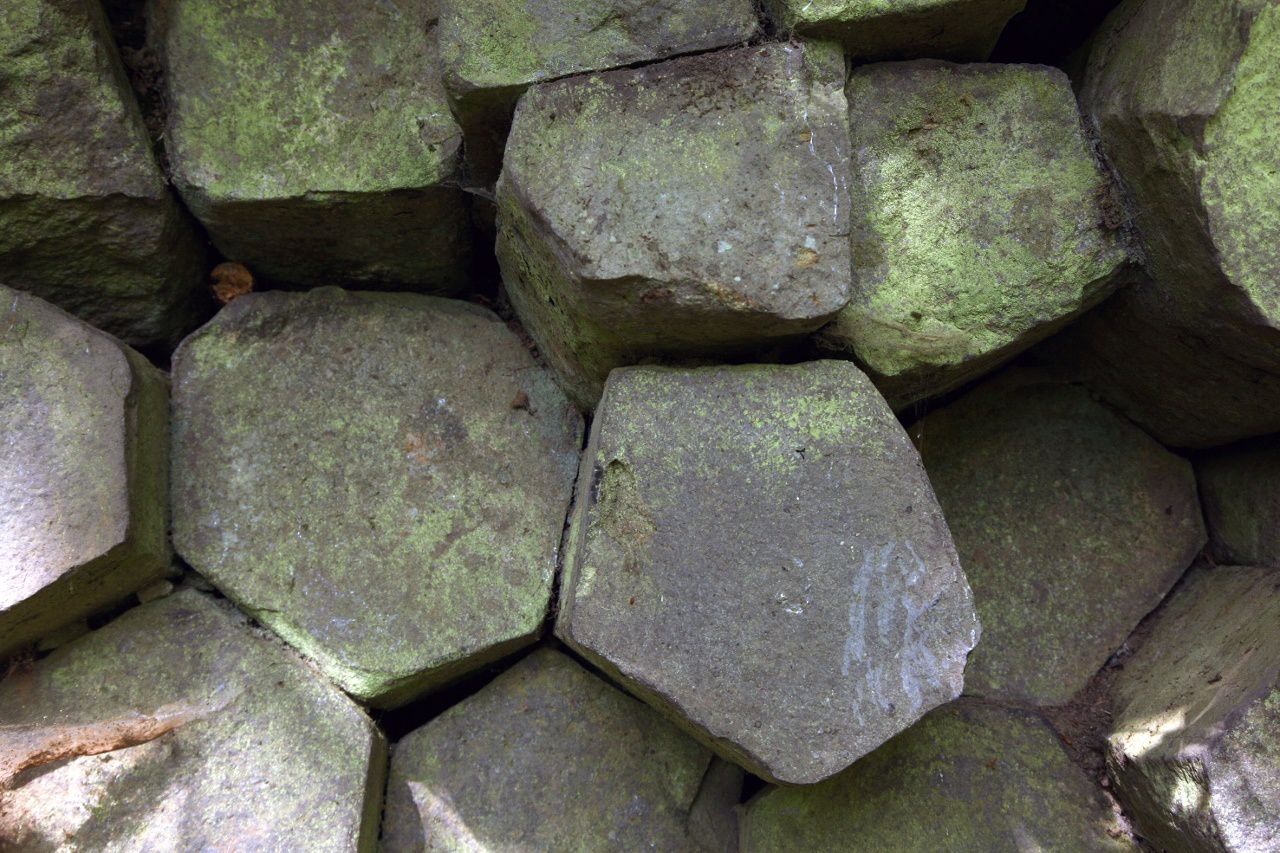Actualité volcanique, Articles de fond sur étude de volcan, tectonique, récits et photos de voyage
Par Bernard Duyck
Located in a natural mixed forest (beech, oak and other hardwoods over 75 ha) northwest of Oberelsbach, Gangolfsberg, a basalt ridge placed on a underbody of limestone, houses a marvel: a wall of basalt prism.
You should run from the car park of the Schweinfurter Haus, a trail long of 2.5 km. to reach the foot of a staircase with steps of unequal height consisting of pieces of basalt columns. The forest trail is passable, but the end of the course, and access to the staircase wall, needs to be approached cautiously ... a misstep here can have significant consequences.
The cooling of basalt, issued during the second phase of volcanism of Rhön, left a wall of volcanic regular organs, medium diameter, placed almost horizontally (sign of basalt rising vertically).
Under the wall, a sea of basalt blocks result, as in Schafstein but on a smaller scale, from the collapse of organs.
The walk continues, on the hillside, to get under a mass of basalt which houses the Teufelskeller, the cave of the devil.
The rock has a coarse prismation.
The legend tells that the Devil is hidden beneath the huge block of basalt at the entrance of a cave. He turned away from the path of unsuspecting farmers, loggers more or less drunk, to enlist in some plot. One day one of them confided to a priest to ease his conscience. The priest sprinkled holy water on the smelling sulfur cave ... the devil spring out the hole and reappeared never again. Since that day, the place is called Teufelskeller.
A chapel, now in ruins, is situated higher on Gangolfsberg; it is dedicated to Saint Gandolf. Died in the year 760, Gangolphus (Saint Gandolf of Avallon) is a military
Bourguignon venerated as a martyr. Its name comes from the Germanic Gangulf, meaning "wolf aggressive".
Sources :
Rhoentourist / Die besondere Tour – zu Prismenwand und Teufelskeller - link
Thème Magazine - Hébergé par Overblog












